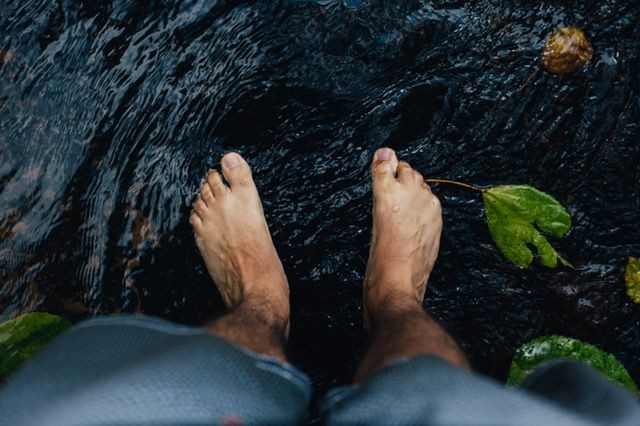Texas Man Undergoes Skin Graft Surgery After Getting Dangerous HPV Foot Infection From Gym Shower

The warm weather invites us to ditch our boots for flip flops, or ditch our shoes altogether at the beach and the park. There's nothing wrong with walking barefoot, or so we think, but in public places like a gym shower, it poses definite risks. A man in Texas caught a gross human papilloma virus (HPV) foot infection after going barefoot into the public shower at his local gym.
"There were a few occasions where I left out my flip flops that I would use when I showered, but not wanting to go back to work sweaty and smelly I made the decision to shower barefoot," wrote the unidentified man, to Houston's 94.5 The Buzz’s The Rod Ryan Show, Men's Health reported.
You will never shower barefoot at the gym after you read this:
— Men's Health Mag (@MensHealthMag) May 1, 2017
https://t.co/9MXXhGpvYZ pic.twitter.com/YiNuP6B3RJ
Read More: How To Avoid Fungal Infections During Summer
The man was training for a marathon during one of his regular gym sessions at lunch. He forgot his flip flops, and decided to shower anyway. Soon after, the marathon trainer developed a hard spot on his foot that began to itch, which turned into a plantar wart — a benign foot tumor caused by HPV.
"Not wanting to impact my training, I let it go and tried to treat it using any remedy I could find online. I tried duct tape, banana peels, vinegar, and OTC acid treatments with no success. It wasn't until after my run approximately 6 months later that I went and saw someone,” he said.
The doctor started to treat the wart with cantharidin — a “painless” liquid blistering agent used to treat a variety of skin growths, like plantar warts.
"The idea is to get your body to recognize that it is trying to fight something and to kill the infection naturally," according to the patient.
The doctor applied the agent on the foot blister, leaving the patient in pain for the next few days. Every week, the doctor would cut away the blistered skin, and apply it on the fresh skin underneath. However, HPV continued to spread, turning one wart into five warts.
The HPV strains that cause plantar warts aren't highly contagious, according to the Mayo Clinic. This means the virus isn't easily transmitted by direct contact from person to person. But, it does thrive in warm, moist environments, like gym showers, increasing the likelihood of contracting it via walking barefoot around swimming pools or locker rooms. Moreover, if the virus spreads from the first site of infection, more warts will start to appear.
Read More: Symptoms Of Hand, Foot, and Mouth Disease
The man continued to undergo the same treatments, but at higher concentrations, with a different doctor. To no avail, in February, he decided to undergo voluntary skin graft surgery using grafts made from North Atlantic Cod via Kerecis Omega3. This is intact fish skin that is used to heal human wounds and tissue damage.
"I had surgery in February and last week was the first time I was able to put my foot in a shoe," he said.
The recovery process is lengthy as he admits it'll most likely be another month before he's able to walk properly and get his normal life back.
Walking barefoot increases the susceptibility of cuts, abrasions and bruises from items in the ground or the ground texture itself. Exposure to frost, heart burns, electric shocks, and even parasites like hookworm, can jeopardize an individual's health.
The marathon trainer emphasizes its dangers by giving advice to the general public:
"Do yourself a favor, wear shoes in any public area where there is water, he said.
This virus thrives in those areas. The scary thing is, the virus can live for over two years on the surfaces as well,” he said.
We should choose wisely when we're ready to strip away our inhibitions, including our shoes.
See Also:
'Heel No Pain', Foot-Numbing Spray, Eliminates High Heel Aches
Nanochip Made Of Recycled Plastic That Can Kill Foot Fungus And Yeast Infections
Published by Medicaldaily.com



























